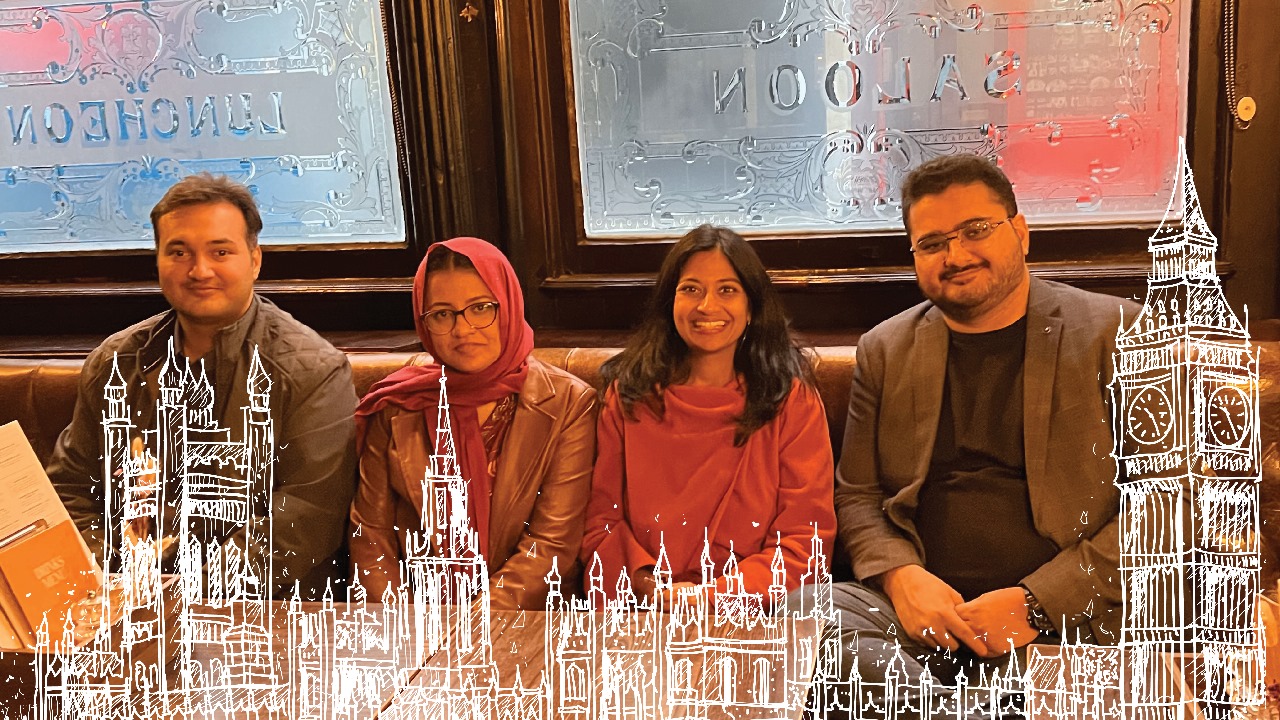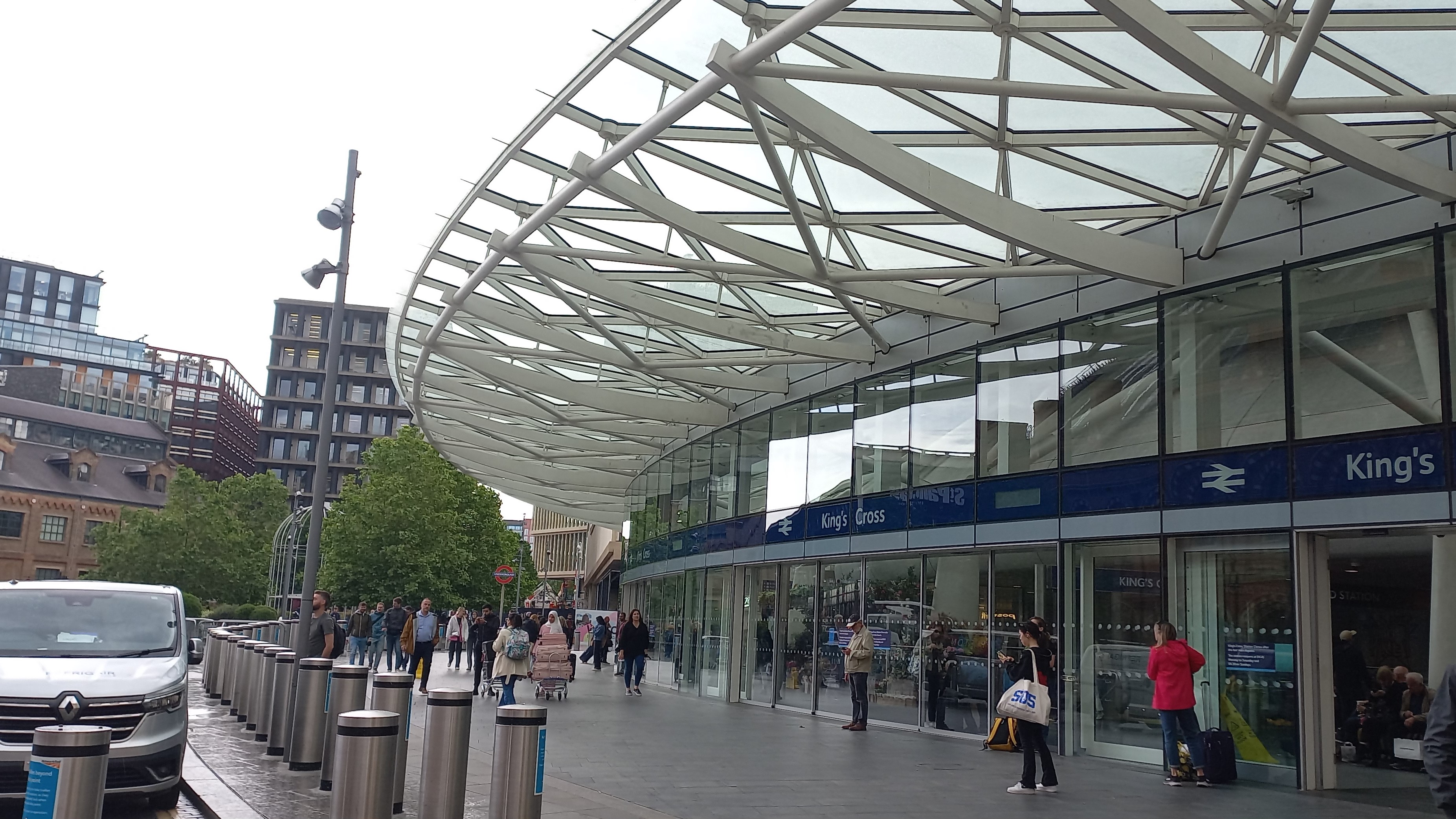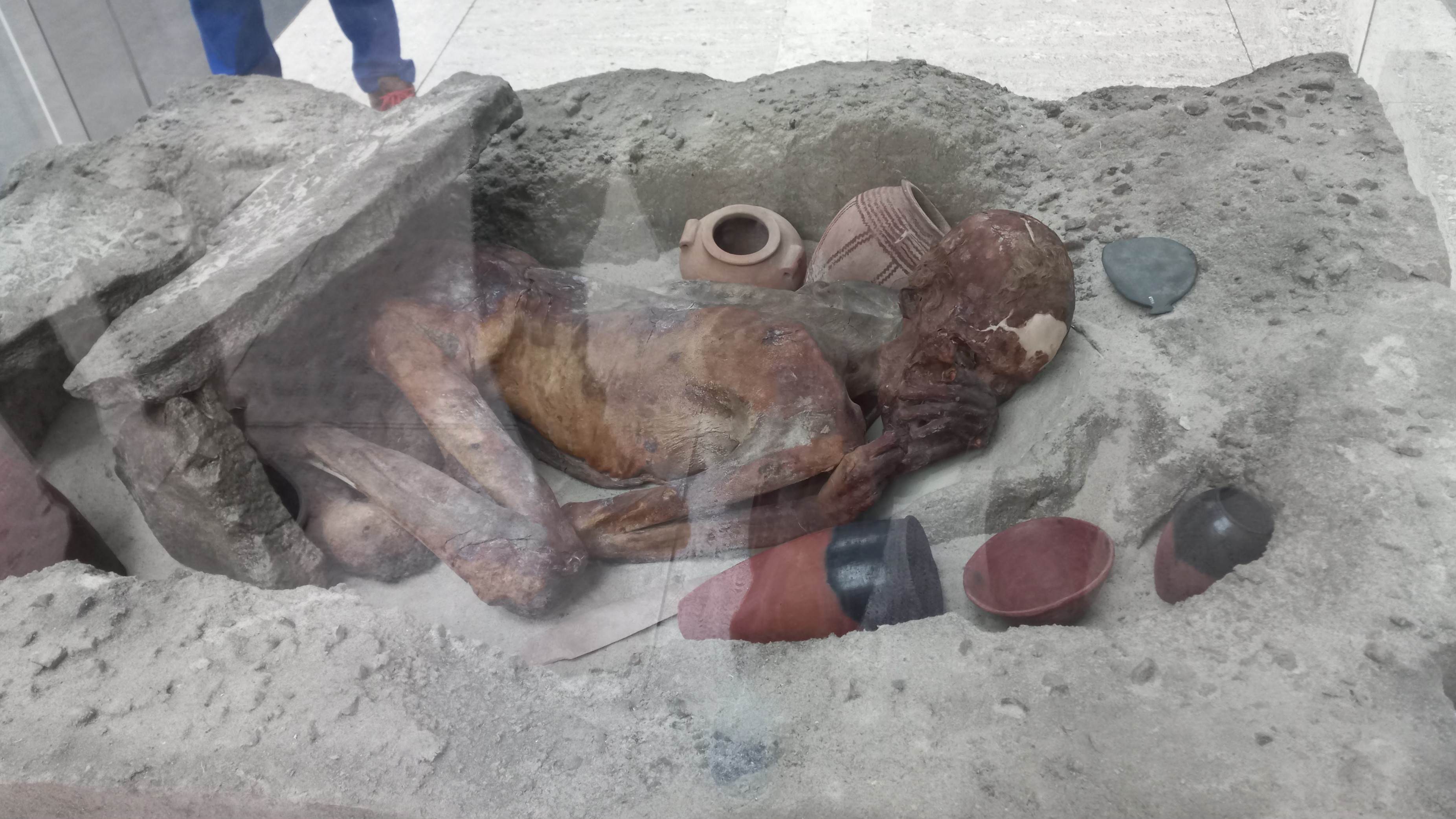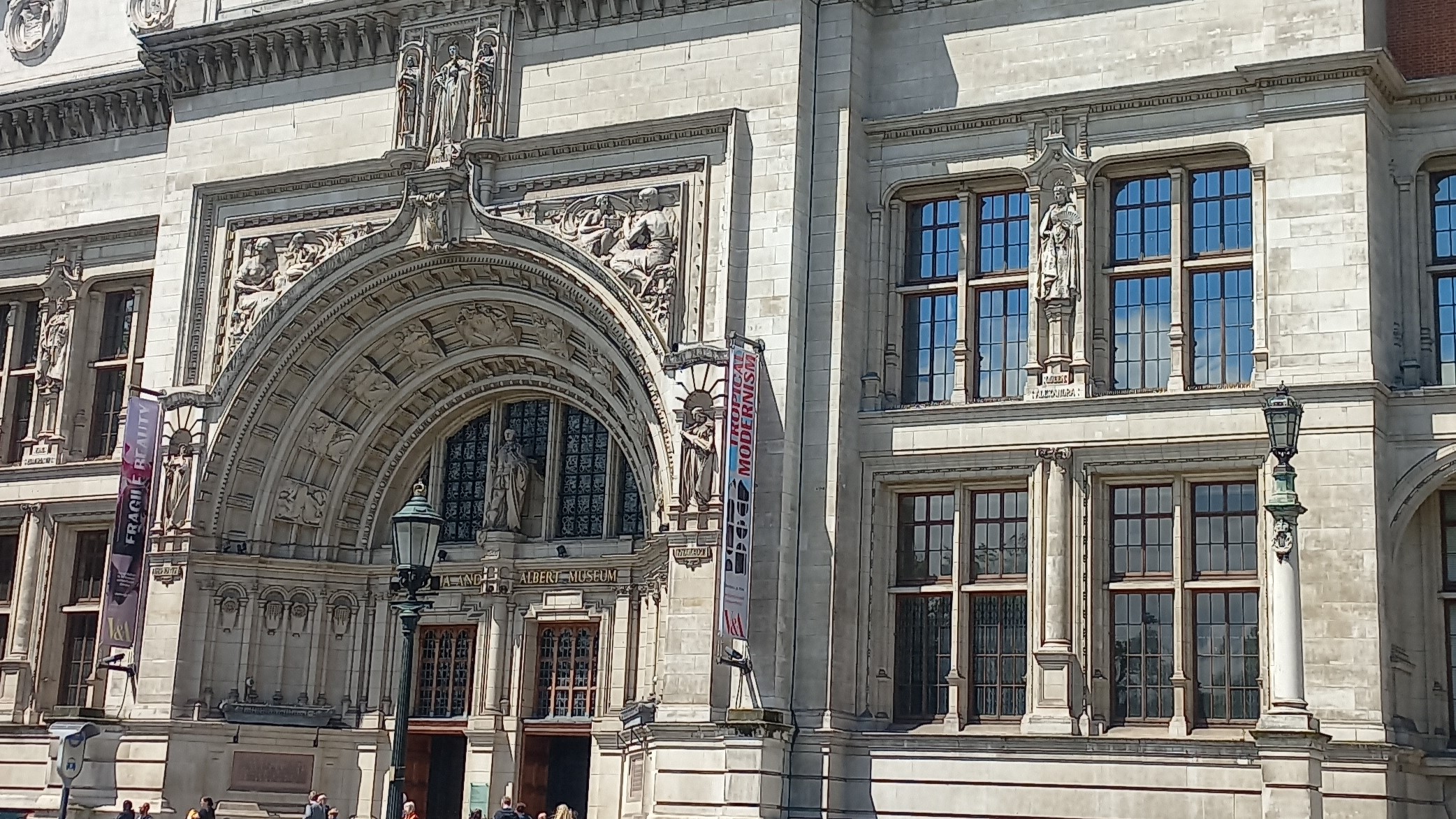
It all started with our landing at Heathrow to attend MySociety’s The Impacts of Civic Technology Conference (TICTeC). We had spent months preparing for this moment. Not only were we participating in a renowned conference, but we also had the opportunity to explore one of the most historic and oldest cities in the world! Despite the human-centered design and clear instructions, we found ourselves going around in circles before realizing how deeply technology has been integrated into London—or perhaps how London has embraced technology.
Step 1: We examined the blue Oyster card with great excitement. Mubassir remarked, “Our metro bus service could also use a card like this."
A few moments later…
Using our debit card to top up our Oyster card was NOT a good idea. A word of advice for those visiting London and planning to use their Pakistani plastic to pay: inform the bank before you leave so your card doesn't get blocked, leaving you in a freeze response.
On to better things, a kind staff member at the Airport guided us to use the Piccadilly line to King’s Cross instead of the Elizabeth line; otherwise, I am unsure where we would have ended up. I must admit, once we downed a nice coffee at Costa, things were really beginning to look up. As we used the London public transport for the first time, donning our civic tech hats, we began to notice the smaller details. We admired the tube maps in our hands and the ones on the top sides of the tube, marveling at the clarity with which the British designed their transport systems. To top it off, we saw many people reading newspapers and books and wondered inwardly why Pakistanis did not read as much, especially on public transport.

London Tube - Image Credits: Bushra
Upon our arrival at King's Cross Station, as we navigated using Google Maps, Bushra’s debit card slipped from her hand while she dragged a 20kg suitcase and a 7kg handbag on her shoulder. At that moment, a local person stopped to assist her, and another picked up and handed her card over.

King’s Cross station - Image Credits: Bushra
As we walked to our hotel to check in, we noticed London's urban infrastructure's intuitive and human-centered design. The road signs and markings were clear and self-explanatory, making it easy for us to find our way around London’s streets as first-time visitors. You could easily identify bus and underground stations from a distance, with each bus route and destination clearly marked at every station. But eventually, we concluded that the people, not the technology and design, made London special—and, of course, the late Queen.

Intuitive designs, London urban Infrastructure
Did I mention just how cool and breezy London is? After a balmy, hot month in Peshawar, we looked up at London's bright blue sky like children in a candy store.
As we explored London on foot, we found it so refreshing to be able to walk everywhere. London is such a pedestrian-friendly city, and I can't say the same for mine, where flyovers have taken over every nook and corner, making life difficult for pedestrians. Not only that, but we also noticed how many bicycles were available for rent through Uber or other companies. Besides convenience, this is a healthy and environmentally friendly way to travel!

Uber Bikes ready to take you home - Image Credits: Bushra
Like all good tourists, we made our way to the Museum Tavern, a 150-year-old fish and chip shop, to devour the famous British Fish and Chips. After dinner, we strolled around the Bloomsbury and Euston region, soaking in the public parks, the hustle and bustle of the street performers, and the multitude of nationalities on the streets of London.

Museum Tavern, Bloomsbury - Image Credits: Bushra
The Conference: TICTeC 2024
On days two and three in London, we got down to business. We had the incredible opportunity to present and conduct a workshop at mySociety's TICTeC conference. The conference was an intimate gathering of 180 civic technologists from 33 countries to explore and share insights on climate change, democracy, civic technology, and government tech initiatives.
We joined the conference early, at 8:30 a.m., and loved our 10-minute walk from our hotel to Mary Ward House. After checking in and receiving our name tags, we attended a breakfast networking event, meeting attendees from around 35 countries worldwide. The opening keynote by Louise Crow, CEO of mySociety, hit all the right notes, emphasizing how civic tech can address today’s most pressing challenges. The first day was packed with insightful talks and workshops, each offering new perspectives. It was hard to pick and choose which one to attend, given all the speakers had such valuable learnings to offer.
Code for Pakistan team with mySociety and National Democratic Institute team - Image Credits: Bushra
We started Day 2 with the same energy but on a slight note of anxiety. More of the ‘butterflies in my stomach’ kind. This day was particularly special as we had our presentations lined up. Right after lunch, Bushra conducted her workshop while Mubassir and Ibraheem prepared for their talk scheduled at 3 PM. Our panel, themed on Citizen Science for Climate Action, gave us the opportunity to present the incredible work done under the FloodLight initiative in response to the devastating floods in Pakistan in 2022. We shared the stage with Petya Kangalova from the Humanitarian OpenStreetMap Team, UK, and virtually with Christoph Raetzsch from Aarhus University, Denmark. The session concluded with a Q&A, where we discussed the future of FloodLight as a global disaster management platform. Engaging in these conversations gave us a fresh perspective on the potential of civic tech to drive meaningful change. It opened a window of opportunities we could adapt and implement in our own projects back home in Pakistan. The sense of community and shared purpose among the attendees reinforced the idea that we work so much better as a collective.
Code for Pakistan team at Mary Ward House, London - Image Credits: Ibraheem
Exploring London
After the conference, we left Mary Ward House to explore the Royal Land of London again. We hopped on a bus to Baker Street station, home of Sherlock Holmes.
The next day proved to be a valuable lesson in British architecture, history, and diversity. The Bank tube station gets its name from the nearby headquarters of the Bank of England, which has been at its Threadneedle Street location since the 1730s. When we exchanged currency at the Bank of England, we were greeted by a Chinese and Sikh guard at the entrance. We were struck by the seamless process of people standing in lines without question and the ease with which we could carry out our transactions at the bank.

Bank Underground Station, London - Image Credits: Bushra

Bank of England - Image Credits: Bushra
We walked to Trafalgar Square, once home to thousands of pigeons. Fun fact: Trafalgar Square is considered to be the geographical center of London, with all distances in the city being measured according to their distance from Charing Cross, located at one corner of the square. As a civic hacker, I couldn't help but reflect on how this iconic space has been a rallying point for democratic movements throughout history. From suffragettes demanding the right to vote to contemporary protests advocating for social justice, Trafalgar Square has long been a symbol of public assembly and civic engagement.
Trafalgar Square, London - Image Credits: Ibraheem
Museums of London
Did I mention how blue the London skies are? And how walkable it is? How can one visit London and not dedicate a day to its famous museums? Starting with the British Museum, we marveled at the Rosetta Stone, the key to deciphering Egyptian hieroglyphs and one of the world's most renowned artifacts. The Gebelein Man, known informally as “Ginger” due to his red hair, is a mummy of a young Egyptian man found in Gebelein (modern Naga el-Gherira, 25 miles south of Thebes).

Gebelein Man, aka Ginger, British Museum - Image Credits: Bushra
We hopped on a double-decker bus towards the Kensington area to explore more of London's museums. En route, we caught a flying show celebrating King Charles' birthday. Our next stop was the Victoria and Albert Museum, where we were particularly fascinated by the sections on the Roman Empire, the Subcontinent, and Middle Eastern history. As tourists, we noticed how clean and well-organized the museums were and how much attention to detail was paid to displaying each piece and providing relevant context to its history. I have been to various museums in Pakistan, which are quite well organized. But creating better public awareness around our artifacts and history is equally important, as I have often met fellow Pakistanis unaware of the number of unique pieces in our museums.
Double-decker bus, Bloomsbury - Image Credits: Ibraheem

Victoria and Albert Museum, South Kensington - Image Credits: Bushra
At the Victoria and Albert Museum, we were captivated by its extensive collections of decorative arts and design, spanning various cultures, including Muslim and Middle Eastern architecture. The museum's architecture was equally impressive, with a harmonious blend of historic and modern elements creating a grand and welcoming atmosphere. We noticed how the Chinese tourists wore earpieces to listen to audio guides and made the best use of technology for a human-centered experience, ensuring they did not disturb other visitors.

Islamic Cultural Heritage, Victoria and Albert Museum - Image Credits: Bushra
Our last stop was the Natural History Museum. The entrance was surreal. It felt like stepping into another world, surrounded by the Earth's elements and minerals. At one point, we lost each other, and I asked a kind staff member to help me find my friend Mubassir. He let me use his phone, and when I connected with Mubassir, he told me he was in the main hall. "The one with the big flying dinosaur!" he exclaimed. Putting people on a speaker is not always the best idea. The museum staff looked at me incredulously— flying dinosaur? THAT'S A WHALE!
Safe to say, we spent the next half hour laughing our heads off.

Flying Dinosaur, aka Blue Whale, at the Natural History Museum
So, first-time London visitors, I hope you enjoyed our story. From women walking briskly in heels on the streets of London to tourists with headphones lugging their baggage with ease, to even the pets looking groomed, London exudes royalty and history. But there is so much we can learn from fellow Londoners. They make the city what it is by being civically active, participating in discourse in their beautiful parks and speakers' corners, the approachable police, and a public transport system that (mostly) works. With over 300 languages spoken in the city of London alone, it is truly a multicultural hub.
London Eye - Image Credits: Ibraheem
I leave you with a fun fact: Legend has it that if the ravens ever leave the Tower of London, the kingdom will fall. To prevent this, there are always at least six ravens kept at the Tower. London truly is a city rich in history, culture, and unique trivia, making it a fascinating place to explore!
Tower Bridge, Greater London - Image Credits: Ibraheem